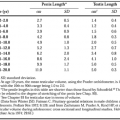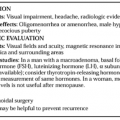FREQUENCY AND SIGNIFICANCE OF HYPOOSMOLALITY
Hypoosmolality of plasma is relatively common in hospitalized patients. The incidence and prevalence of hypoosmolar disorders depend on the nature of the patient population being studied and on the laboratory methods and diagnostic criteria used. Most investigators have used the serum sodium concentration ([Na+]) to determine the clinical incidence of hypoosmolality. When hyponatremia is defined as a serum [Na+] of <135 mEq/L, an incidence as high as 15% to 30% has been observed in patients hospitalized for both short1 and longer2 periods. However, the incidence decreases to a range of 1% to 4% when only patients with a serum [Na+] of <130 to 131 mEq/L are included,1,3 although even when these more stringent criteria are used, incidences of 7% to 30% have been reported in hospitalized geriatric patients.2 Interestingly, many studies have noted a high incidence of iatrogenic or hospital-acquired hyponatremia, which accounts for 40% to 75% of all cases examined.3,4 Furthermore, a frequency analysis of a large group of hospitalized patients demonstrated serum sodium and chloride concentrations that were ˜5 mEq/L lower than those in a control group of healthy, nonhospitalized subjects.5 Consequently, the conclusion can be drawn that most cases of hypoosmolality are relatively mild and that it is often acquired during hospitalization. Although this might appear to signify that hypoosmolality generally is of little clinical significance, this conclusion is unwarranted for several reasons. First, severe hypoosmolality (serum [Na+] level of <125 mEq/L), although relatively uncommon, is associated with substantial morbidity and mortality. Second, even relatively mild hypoosmolality can progress to more dangerous levels during the therapeutic management
of other disorders. Finally, the observation has been made that mortality is as much as 60-fold higher in patients with even asymptomatic degrees of hypoosmolality than in normonatremic patients.3 Although this probably indicates that hypoosmolality is more an indicator of the severity of many underlying illnesses than an independent factor contributing to mortality, this presumption may not be true in all cases. These considerations, therefore, emphasize the importance of a careful evaluation of all hyponatremic patients, regardless of the clinical setting.
of other disorders. Finally, the observation has been made that mortality is as much as 60-fold higher in patients with even asymptomatic degrees of hypoosmolality than in normonatremic patients.3 Although this probably indicates that hypoosmolality is more an indicator of the severity of many underlying illnesses than an independent factor contributing to mortality, this presumption may not be true in all cases. These considerations, therefore, emphasize the importance of a careful evaluation of all hyponatremic patients, regardless of the clinical setting.
Stay updated, free articles. Join our Telegram channel

Full access? Get Clinical Tree






